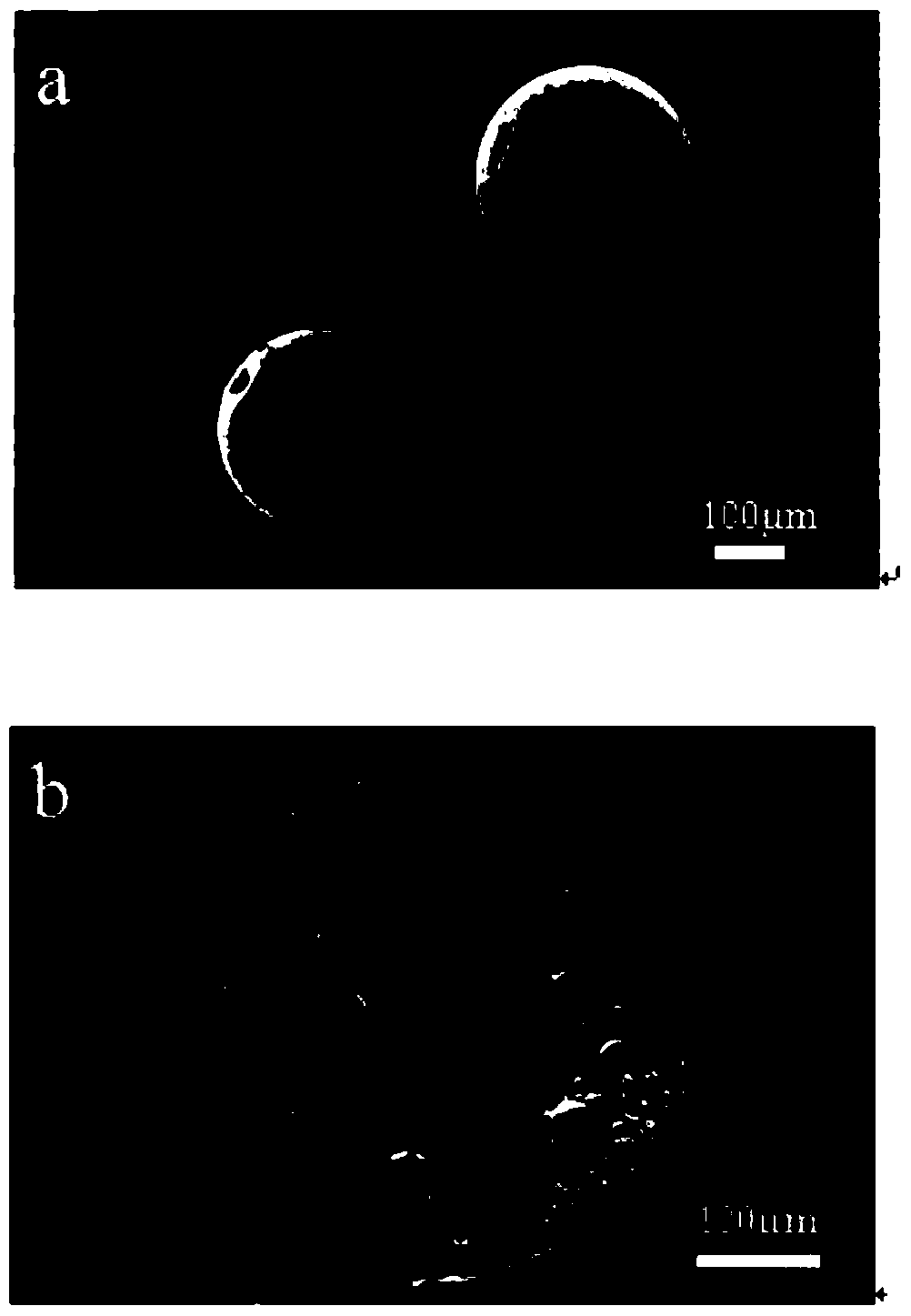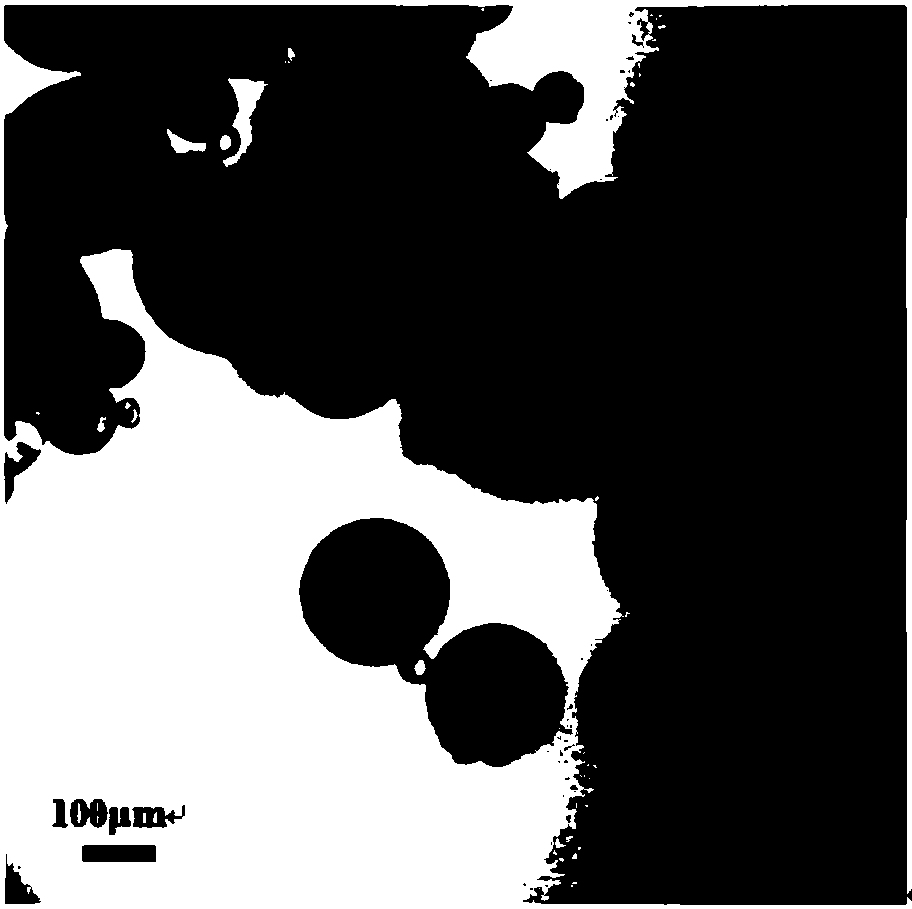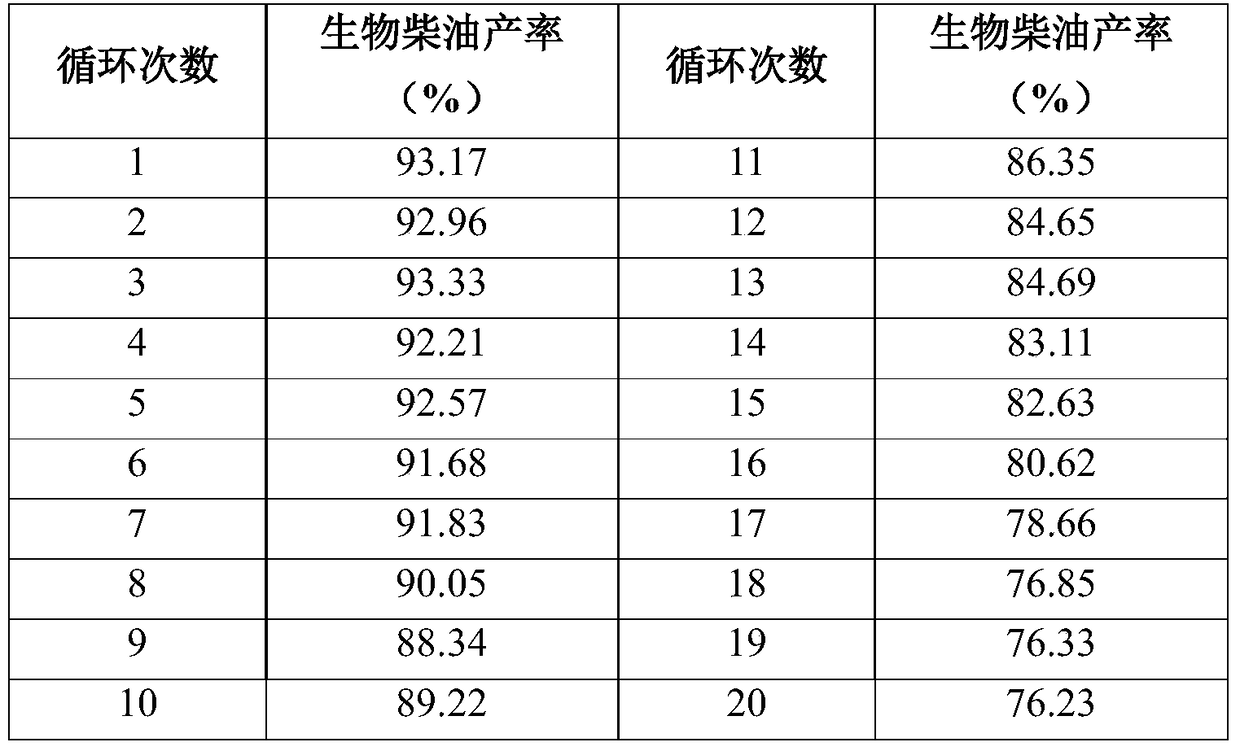A kind of static emulsion method immobilized lipase produces the method for biodiesel
A technology for immobilizing lipase and biodiesel, which is applied in the fields of immobilized on/in organic carriers, biofuel, chemical industry, etc. It can solve the problems of poor activity of free lipase, difficult recovery of esterification products, and low operational stability To achieve good mechanical stability, facilitate recycling and reuse, and improve mass transfer performance
- Summary
- Abstract
- Description
- Claims
- Application Information
AI Technical Summary
Problems solved by technology
Method used
Image
Examples
example 1
[0038] Immobilized lipase: Candida antarctica lipase B was dissolved in phosphate buffered saline solution of pH 7.0, configured into a 20 mg / mL lipase solution, polydimethylsiloxane (Dow Corning DC184, the same as in the following examples) ) 2g, (volume 1.9mL), lipase liquid 0.5g, platinum catalyst 4g join in the Erlenmeyer flask, vacuumize (0.09Mpa) magnetic stirring 0.5 hour, form emulsion; In Erlenmeyer flask, add dispersion agent PVA (polymerization Degree 1000, degree of alcoholysis 98%; The following examples are the same as this) solution 200mL, magnetic stirring makes PVA solution evenly adsorb on the oil droplet surface for 0.5 hour, forms composite emulsion. Place the Erlenmeyer flask containing the complex emulsion in a constant temperature water bath, mechanically stir at 30°C, solidify for 3 hours, and use a water circulation vacuum pump to filter and separate the immobilized enzyme from the system to obtain the immobilized lipase;
[0039] Electron microscope c...
example 2
[0044] Immobilized lipase: Dissolve Burkholderia cepacia lipase in phosphate buffer solution with pH 7.0 to make 40mg / mL enzyme solution, add 2g of polydimethylsiloxane (volume 1.9mL), lipase Liquid 1g, platinum catalyst 1g join in the Erlenmeyer flask, evacuate (0.09Mpa) magnetic stirring and stirring for 1 hour, form emulsion; Add dispersant PVP solution 300mL in the Erlenmeyer flask, magnetic stirring 0.5 hour makes PVP (K value 30 ; The following examples are the same as this) solution is evenly adsorbed on the oil droplet surface to form a composite emulsion. Place the Erlenmeyer flask containing the complex emulsion in a constant temperature water bath, mechanically stir at 40°C, solidify for 1 hour, and use a water circulation vacuum pump to filter and separate the immobilized enzyme from the system to obtain the immobilized lipase;
[0045] Preparation of biodiesel: 0.60g of peanut oil (the volume of peanut oil is 0.63mL, and the molar weight is 0.67mM), 0.24g of metha...
example 3
[0048] Immobilized lipase: Dissolve Candida columnar lipase in phosphate buffer solution with pH 7.0 to make 50mg / mL enzyme solution, add polydimethylsiloxane 2g (volume 1.9mL), lipase solution 0.2 g, 5g of platinum catalyst was added to the Erlenmeyer flask, vacuumed (0.09Mpa) and magnetically stirred for 0.5 hours to form an emulsion; 300mL of dispersant PVA solution was added to the Erlenmeyer flask, and magnetically stirred for 1 hour to make the PVA solution evenly adsorbed on the oil droplets surface, forming a complex emulsion. Place the Erlenmeyer flask containing the complex emulsion in a constant temperature water bath, mechanically stir at 60°C, solidify for 1 hour, and use a water circulation vacuum pump to filter and separate the immobilized enzyme from the system to obtain the immobilized lipase;
[0049] Preparation of biodiesel: jatropha oil 0.60g (jatropha oil volume is 0.6mL, molar weight is 0.66mmol), methanol 0.24g, (methanol volume is 0.30mL; molar weight ...
PUM
 Login to View More
Login to View More Abstract
Description
Claims
Application Information
 Login to View More
Login to View More - R&D
- Intellectual Property
- Life Sciences
- Materials
- Tech Scout
- Unparalleled Data Quality
- Higher Quality Content
- 60% Fewer Hallucinations
Browse by: Latest US Patents, China's latest patents, Technical Efficacy Thesaurus, Application Domain, Technology Topic, Popular Technical Reports.
© 2025 PatSnap. All rights reserved.Legal|Privacy policy|Modern Slavery Act Transparency Statement|Sitemap|About US| Contact US: help@patsnap.com



